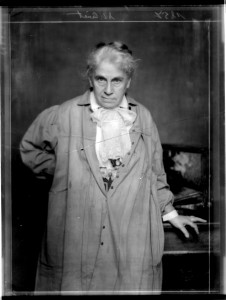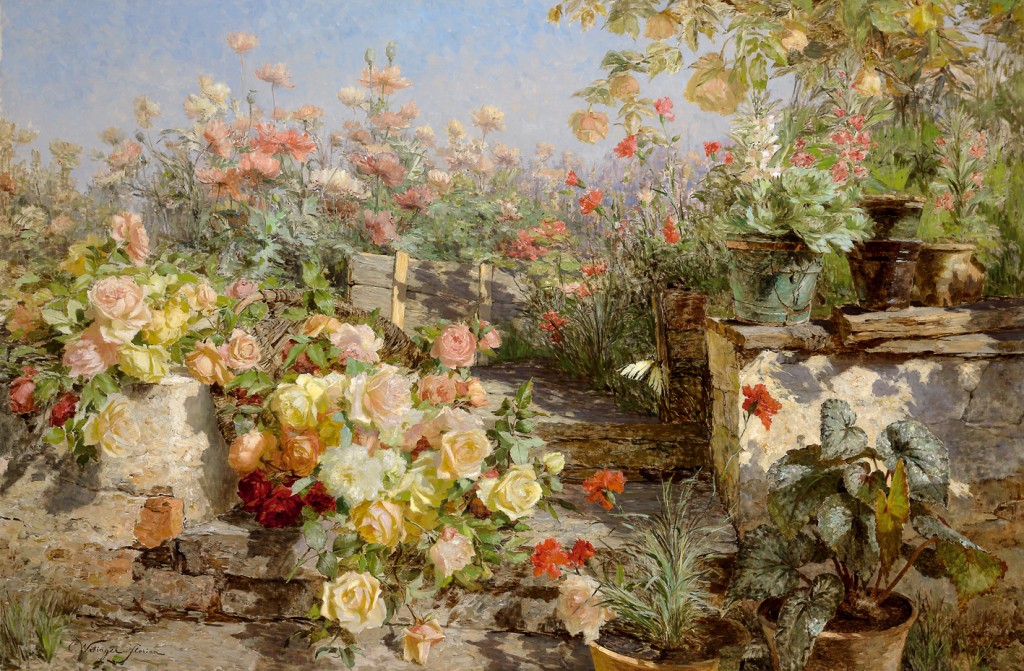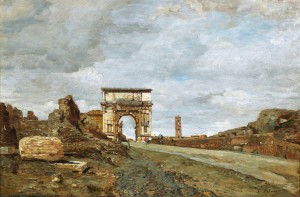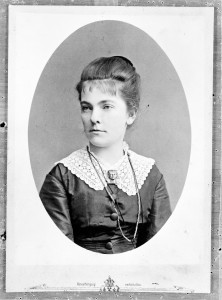The works of Austrian Atmospheric Impressionism’s female proponents bring a spring mood to any room – and to Dorotheum’s 19th Century Painting sale. Luckily, they pop up regularly in exhibitions and on the art market.
When telling the story of women in art, a natural starting point is Pliny the Elder, who lived from AD 23 to AD 79. In his treatise on the invention of painting he described for the first time the scene of a young girl drawing. In the medieval period too, women were known to pursue creative-artistic activities. The brilliant female artists who managed to break the male monopoly on fine arts in 16th and 17th century Holland and Italy also deserve due attention. In the 18th century, female artists fought hard and largely successfully to secure women access to art academies. The victory helped pave a solid footpath into the 19th century, the century of social upheaval, of emancipation and gender revolution. 19th century art is characterised by two seemingly opposing trends, one being the view back in time, the nostalgia-tinged reiteration – works of great masters and the styles of entire cultural epochs were copied; the Historicism trend made a massive imprint on cities such as Vienna. The other trend is Modernism, the roots of which can be traced back to beginning of the century.
Austrian female artists such as Tina Blau-Lang (1845–1916), Marie Egner (1850–1940) and Olga Wisinger-Florian (1844–1926), who were all Modernists, are prime examples of Austrian Atmospheric Impressionism, but also of the emergence of a strong female footprint in the art world. They were admired in their lifetime; they were exhibited and their works traded in the art market.

In Tina Blau’s obituary, printed in ”Neuen Freien Presse” on 31 October 1916, Adalbert Franz Seligmann wrote: ”Her ‘Krieau’ painting hangs in Moderne Galerie [Belvedere museum today] and even our emperor has several paintings by Tina Blau in his private collection.” On her significance Seligmann wrote: ”She should be classified on a level with Schindler and Robert Russ. Her work is characterised by the masculine, energetic streak, which especially Vienna artists so often lack. There’s nothing woman-like whatsoever, nothing feminine or sweet about her work.”
Compared directly with the works of Emil Jakob Schindler and Robert Russ, as Seligmann suggests – and undoubtedly a legitimate comparison – the quality of her paintings is apparent. She is, along with Emil Jakob Schindler, Carl Moll, Theodor von Hörmann, Hugo Darnaut, Marie Egner and Olga Wisinger-Florian, a key exponent of Austrian Atmospheric Impressionism; her landscapes are shimmering, heavy, fresh and luminous – but are they also masculine? Or feminine? Is there really a difference?
The works of Schindler and Russ collect top prices nowadays. Dorotheum sold Schindler’s ”Blick auf Ragusa” for 317,500 euros, while a painting by Russ changed hands at the price of 1.2 million Austrian schilling, or some 87,500 euros. In that particular auction, however, a painting by a female artist secured the highest sales price: Olga Wisinger-Florian’s ”Blühende Wiese” sold at 1.3 million schilling, or about 95,000 euros.
Actually, quite a few works by female Austrian Atmospheric Impressionists have secured even higher prices at Dorotheum auctions over the years. Wisinger-Florian’s ”Blühender Bauerngarten” reached a sales price of 290,000 euros, Tina Blau’s ”Beim Atelier der Künstlerin, Prater 1907” sold at 97,900 euros, Marie Egner’s ”In der Blütenlaube” at 165,500 euros.


Their paintings have a broad appeal and regularly resurface at art auctions. Tina Blau’s “View of the ‘Arco de Tito Vespasiano’ and the nearby Forum Romanum ruins”, for example, is up for sale in Dorotheum on 21 April. The canvas was painted in 1879, presumably during a trip to Italy. The Tito Vespasiano Arch has been depicted with great attention to details; in the background lingers Forum Romanum under an overcast and heavy sky. In accordance with standard impressionist style, all the painting’s key elements are slightly fuzzy and surrounded by a highly atmospheric barren landscape. The painting was shown for the first time in Vienna at an exhibition in Künstlerhaus in 1880. It was since exhibited in Belvedere in 1971 and in the Jewish Museum in 1996. “View of the ‘Arco de Tito Vespasiano’ and the nearby Forum Romanum ruins” is a textbook example of Tina Blau’s style and art production, Tina Blau herself a textbook example of the newly acquired autonomous position of women at the time, of a female career artist.
She received her formal education in Vienna and Munich, undertook several of research trips to Italy and Holland, much in the spirit of the time. She shared a studio with Emil Jakob Schindler, married artist colleague Heinrich Lang, taught art classes and co-founded the Vienna Art School for Women and Girls. Her works appeared regularly in exhibitions and were eagerly traded. And yes, the emperor of Austria did indeed possess several paintings by Blau.
The upheavals of the 19th century didn’t just redefine the general public’s political expectations, it also brought about a fundamental social restructuring of society. Women began actively fighting for equality of rights, repositioned themselves politically. Gradually, women were allowed to realise their potential as artists, privately but also professionally. Girls were allowed to visit art schools. Women’s art associations popped up. A career as professional female artist ceased to be an exotic oddity. Women taught, worked with and travelled for art. Another prime example is Marie Egner.

As the five years older Tina Blau, Marie Egner too attended art schools in Austria and Germany and later joined the group around Emil Jakob Schindler. She spent time in the UK and Italy on work trips financed with self-earned money. Egner too ran her own art school. ”Her work is frequently shown in exhibitions in Austria and abroad, always with great success,” wrote Karoline Murau in ”Wiener Malerinnen”, 1895.
Egner’s painting ”Vorgarten mit blühenden Stockrosen,” due to be sold at Dorotheum’s auction on 21 April, depicts the full bloom of summer, juicy green and bathed in bright sunlight.

In addition to her well known landscapes, which she preferred to work on outdoors, Egner painted still life flower motifs indoors when the weather didn’t play along.
Tina Blau, Marie Egner and Olga Wisinger-Florian all serve as convincing proof that women were prominently present and fully accepted in the 19th century art world. Their high-quality production has secured them a well-deserved, solid spot in art history – and in the market place.
Fall season exhibition tip:
Masterpieces in focus: Tina Blau
4 November 2016 – 15 January 2017
Belvedere Vienna
Information:
Dimitra Reimüller, expert on 19th Century Paintings at Dorotheum
19th Century Paintings auction
Thrusday 21 April 2016, 5 pm
Palais Dorotheum Vienna
View the Online Catalogue!













